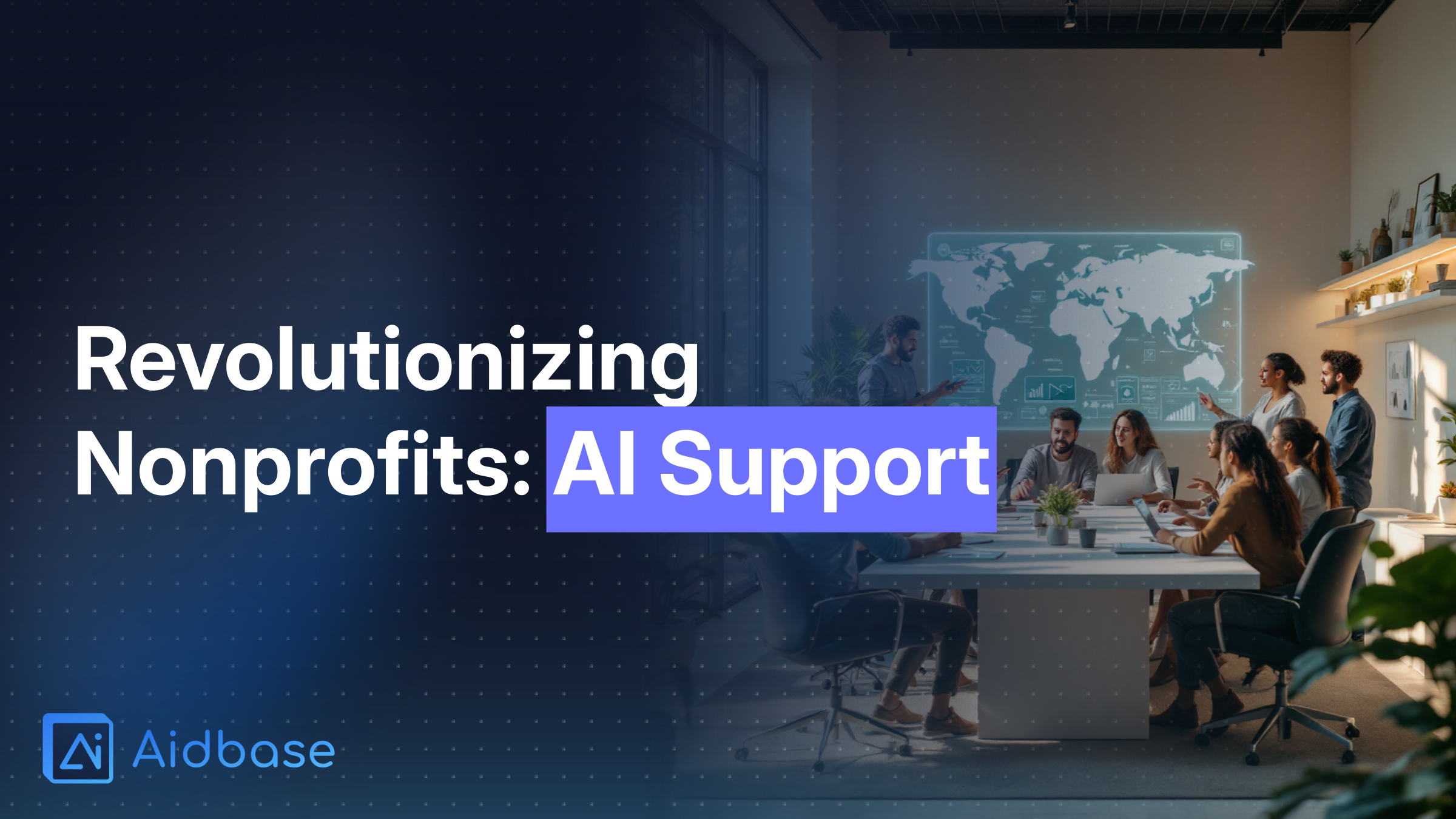In the nonprofit sector, AI is revolutionizing customer support by enhancin...

In an era where technological advances continue to reshape sectors traditionally reliant on human interactions, the nonprofit world is embracing AI-powered customer support to boost donor engagement and streamline operations. This transformation is not only about automating processes but also about leveraging personalized interactions and insights to build deeper, more meaningful relationships with supporters.
Artificial Intelligence is making significant inroads into the nonprofit sector by transforming the way organizations handle customer support. By integrating AI, nonprofits can manage large volumes of donor and client interactions with higher efficiency. For instance, AI-driven chatbots and virtual assistants are capable of offering real-time answers and tailored guidance, enabling nonprofits to remain accessible around the clock.
Major benefits include:
Nonprofits are increasingly turning to AI systems like Aidbase for AI support, which offers powerful tools to manage customer interactions while supporting decision-making processes.
AI is revolutionizing donor engagement by personalizing interactions which foster connection and loyalty. By dissecting data gathered from various donor touchpoints, AI can identify trends and preferences that allow organizations to craft messages that deeply resonate with individual donors. For example, St. Jude Children's Research Hospital successfully used AI to discover that sharing patient stories significantly drove donor contributions—leading to new donors accounting for 25% of YouTube donation revenue (source: HelpyouSponsor).
Key strategies include:
These approaches enable nonprofits to not only retain existing donors but also attract new supporters by offering personalized experiences that feel both relevant and empathetic.
Opportunity International provides a compelling example of how nonprofits can harness AI for impactful initiatives. The organization has implemented innovative AI solutions aimed at supporting smallholder farmers and teachers in rural Africa.
In Malawi, Opportunity International piloted "Ulangizi," an AI chatbot that communicates in the local Chichewa language via WhatsApp. This solution provides region-specific agricultural advice in real time, empowering farmers with critical information to enhance their yields and build resilience. The initiative has been well-received, illustrating how language-specific customization can overcome communication barriers and foster community trust (Opportunity International UK).
Similarly, in Kenya, the partnership with Safaricom led to the launch of "FarmerAI," an AI chatbot delivering timely agricultural guidance to potato farmers through SMS and WhatsApp. This collaboration makes vital information accessible, helping smallholder farmers optimize their practices and contribute to more sustainable agricultural communities (Opportunity International).
These case studies demonstrate AI’s potential to extend the reach of nonprofit initiatives, ensuring that remote communities receive the support they need in a culturally and contextually relevant manner.
Beyond donor engagement, AI is also streamlining internal operations, enhancing overall efficiency in nonprofit organizations. AI-driven automation tools manage routine administrative tasks such as data entry, scheduling, and generating reports. This operational efficiency results in:
Through collaborations with AI platforms such as Aidbase, organizations can leverage data insights and automation to refine both their donor and beneficiary engagement strategies.
While AI introduces impressive efficiencies, it’s crucial for nonprofits to maintain a human touch. Trust and emotional connections play a pivotal role in donor relationships. The benefits of AI must therefore complement, rather than replace, human interaction.
Strategies to maintain this balance include:
As detailed by HelpyouSponsor, maintaining these human connections is essential for long-term support and trust.
Despite the promising potential of AI in the nonprofit sector, several challenges must be addressed:
Addressing these ethical considerations helps maintain public trust and ensures that the benefits of AI do not come at the cost of neglecting the human aspect of donor relationships.
Looking ahead, AI is poised to further revolutionize the nonprofit sector. Emerging trends include:
These advancements promise an ecosystem where donor care is both efficient and profoundly personalized, ultimately driving forward the mission of nonprofits around the globe.
AI-powered customer support is ushering in a new era for nonprofits by enhancing donor engagement and streamlining operational efficiency. Through strategic use of AI tools—balancing automation with human touch—nonprofit organizations can better serve their communities, support remote stakeholders, and enhance overall operational impact. As demonstrated by initiatives like Opportunity International's AI projects in Africa, embracing these technologies not only improves service delivery but also deepens the emotional connection with supporters. With careful attention to challenges and ethical considerations, AI stands to be a transformative ally in the pursuit of a more impactful, responsive nonprofit sector.